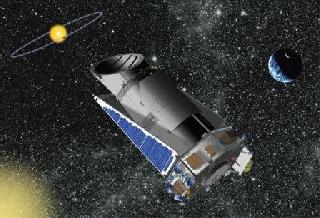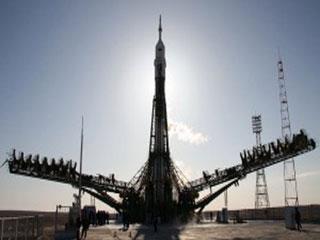
Kepler spacecraft. A NASA photo.
WASHINGTON (PTI): Planetary scientists have discovered what they claim is an unusual multiple-planet solar system containing a "super-Earth" and two Neptune-sized planets orbiting in resonance with each other.
A team led by Bill Cochran of The University of Texas at Austin, used NASA's Kepler spacecraft to discover the multi-planet system, the findings of which are to be published in an upcoming edition of 'The Astrophysical Journal'.
The planets have been designated b, c, and d. All three planets orbit much closer to Kepler-18, a star similar to the sun, say the scientists.
Planet b weighs in at about 6.9 times the mass of Earth, and twice Earth's size and considered a "super-Earth" with a 3.5-day period; planet c has a mass of about 17 Earths, is about 5.5 times Earth's size and orbits Kepler-18 in 7.6 days.
Planet d weighs in at 16 Earths, at 7 times Earth's size, and has a 14.9-day orbit. The masses and sizes of c and d qualify them as low-density two Neptune-class planets. And, planet c orbits the star twice for every one orbit d makes.
But the times that each of these planets transit the face of Kepler-18 "are not staying exactly on that orbital period", Cochran said. "One is slightly early when the other one is slightly late, (then) both are on time at the same time, and then vice-versa," he added.
Scientifically speaking, c and d are orbiting in a 2:1 resonance. "It means they're interacting with each other. When they are close to each other, they exchange energy, pull and tug on each other," Cochran said.
Kepler uses the "transit method" to look for planets. It monitors a star's brightness over time, looking for periodic dips that may indicate a planet passing in front of the star.
Confirming the planetary bonafide of planet b, the "super-Earth", was much more complicated, said Cochran whose team used a technique called "validation". They set out to figure out the probability that it could be something other than a planet.
First, they used the Palomar 5-metre Hale Telescope with adaptive optics to take an extremely high-resolution look at the space around Kepler-18.
"We successively went through every possible type of object that could be there. There are limits on the sort of objects that can be there at different distances from the star. There's a small possibility that (planet b) is due to a background object, but we're very confident that it's probably a planet," Cochran said.
 Previous Article
Previous Article Next Article
Next Article













The Indian Air Force, in its flight trials evaluation report submitted before the Defence Ministry l..
view articleAn insight into the Medium Multi-Role Combat Aircraft competition...
view articleSky enthusiasts can now spot the International Space Station (ISS) commanded by Indian-American astr..
view article